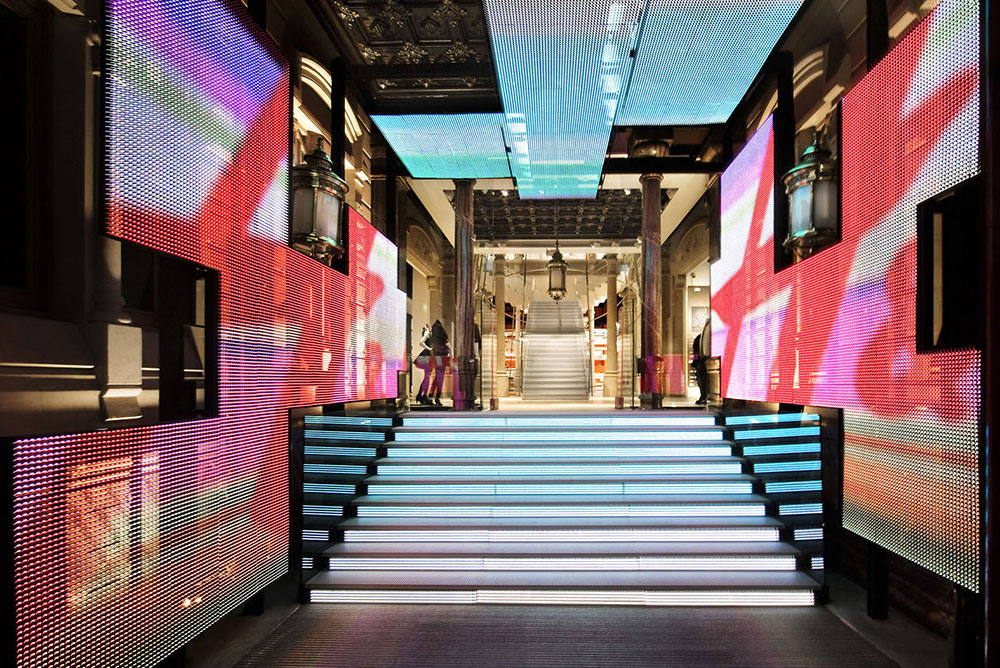
Measuring success is crucial.
Success in fashion retail can be measured in several ways, depending on the specific goals and objectives of the retailer. Some common metrics for measuring success in fashion retail include sales and revenue, profit margin, customer satisfaction and loyalty, market share, and brand recognition and reputation. In addition, retailers may also use metrics such as inventory turnover, product and service innovation, and operational efficiency to measure their success.
In general, success in fashion retail can be measured by examining how well the retailer is achieving its specific business objectives and how it compares to competitors in the market. For example, suppose a fashion retailer’s main objective is to increase sales and revenue. In that case, success can be measured by comparing the retailer’s sales and revenue growth over time to its competitors. If the retailer aims to improve customer satisfaction and loyalty, success can be measured by surveying customers and tracking customer retention and repeat business metrics. Ultimately, the key to measuring success in fashion retail is to identify the specific goals and objectives of the retailer and to use appropriate metrics to track progress and performance over time.
The role of digital transformation is vital.
Digital transformation plays a critical role in the success of a fashion retail business. Digital technologies such as e-commerce, social media, and mobile apps are transforming how fashion retailers interact with customers. By adopting and integrating these technologies into their operations, fashion retailers can improve efficiency, increase sales and revenue, and enhance the customer experience.
For example, e-commerce allows fashion retailers to reach a wider customer base and sell their products and services online. Social media platforms such as Facebook, Instagram, and Pinterest can be used to engage with customers, showcase products and collections, and build brand awareness and recognition. Mobile apps can provide customers with personalised and convenient shopping experiences and collect valuable data on customer preferences and behaviours.
Overall, digital transformation is essential for fashion retailers to remain competitive and successful in today’s digital economy. By embracing digital technologies and integrating them into their operations, fashion retailers can improve their performance, stay ahead of competitors, and drive growth and success.
H&M leads fashion retail because they continuously invest in digital.
One example of a successful digital transformation in the fashion retail industry is H&M, global fashion retailer with over 4,000 stores in 62 countries. H&M has undergone a major digital transformation in recent years, adopting and integrating various digital technologies into its operations.
For example, H&M has launched an e-commerce platform that allows customers to shop online from anywhere in the world. The company has also designed a mobile app that provides customers with personalised and convenient shopping experiences. Furthermore, it has integrated social media platforms like Instagram and Pinterest into its marketing and customer engagement strategy. Additionally, H&M has implemented digital technologies such as artificial intelligence and machine learning to enhance its supply chain and logistics operations and to collect and analyse customer data.

As a result of its digital transformation, H&M has seen significant improvements in its performance and competitiveness. The company has reported increased sales and revenue, improved customer satisfaction and loyalty, and reduced costs and operational inefficiencies. H&M’s digital transformation has also helped it stay ahead of competitors and maintain its position as a leading fashion retailer.
YNAP is another powerhouse in terms of digital
Another example of a successful digital transformation in the fashion retail industry is the Italian luxury fashion brand Yoox Net-A-Porter (YNAP). YNAP has undergone a major digital transformation in recent years, adopting and integrating various digital technologies into its operations and customer experiences.

For example, YNAP has implemented a sophisticated e-commerce platform that allows customers to shop online and access a large range of products and services. The company has also launched mobile apps that provide customers with personalised and convenient shopping experiences. Additionally, YNAP has invested in data analytics and artificial intelligence (AI) to improve its supply chain management, product selection, and customer service.
The results of YNAP’s digital transformation have been impressive. The company has seen significant sales and revenue growth and expanded its customer base and market share. YNAP has also received positive feedback from customers for its innovative and user-friendly digital experiences. Overall, YNAP’s digital transformation has succeeded, enabling the company to remain competitive and thriving in the highly competitive fashion retail industry.
These are the most important critical success factors.
Several critical success factors are essential for succeeding with digital transformation in the fashion retail industry. Here are some of the most critical ones:
- A clear and strategic vision for digital transformation: In order to succeed with digital transformation, fashion retailers need to have a clear and strategic idea of how they will use digital technologies to improve their operations and customer experiences. This vision should be aligned with the retailer’s overall business goals and objectives and supported by senior leadership and key stakeholders.
- Investment in technology and digital capabilities: Digital transformation requires significant investment in technology and digital capabilities. Fashion retailers must invest in the right technologies, platforms, and infrastructure to support their digital initiatives. They should also invest in employee training and development to ensure they have the skills and knowledge to use these technologies effectively.
- Collaboration and partnerships: Digital transformation often requires cooperation and partnerships with other organisations and experts. Fashion retailers should seek partnerships with technology providers, consultants, and other experts who can help them with their digital initiatives and should also seek opportunities to collaborate with other retailers and industry organisations to share knowledge and best practices.
- Flexibility and agility: The fashion retail industry is highly dynamic and competitive, and digital transformation requires flexibility and agility to adapt to changing market conditions and customer needs. Fashion retailers need to be able to quickly and effectively respond to market changes and customer preferences. They should be prepared to regularly review and adjust their digital strategies to remain relevant and effective.
- Focus on the customer experience: Ultimately, the success of digital transformation in the fashion retail industry will be determined by how well it improves the customer experience. Fashion retailers need to focus on creating digital experiences that are personalised, convenient, and engaging for customers. In addition, they should use data and analytics to understand and respond to customer preferences and behaviours.
By focusing on these critical success factors, fashion retailers can escalate their chances of success with digital transformation and remain competitive in the fast-changing fashion retail industry.

